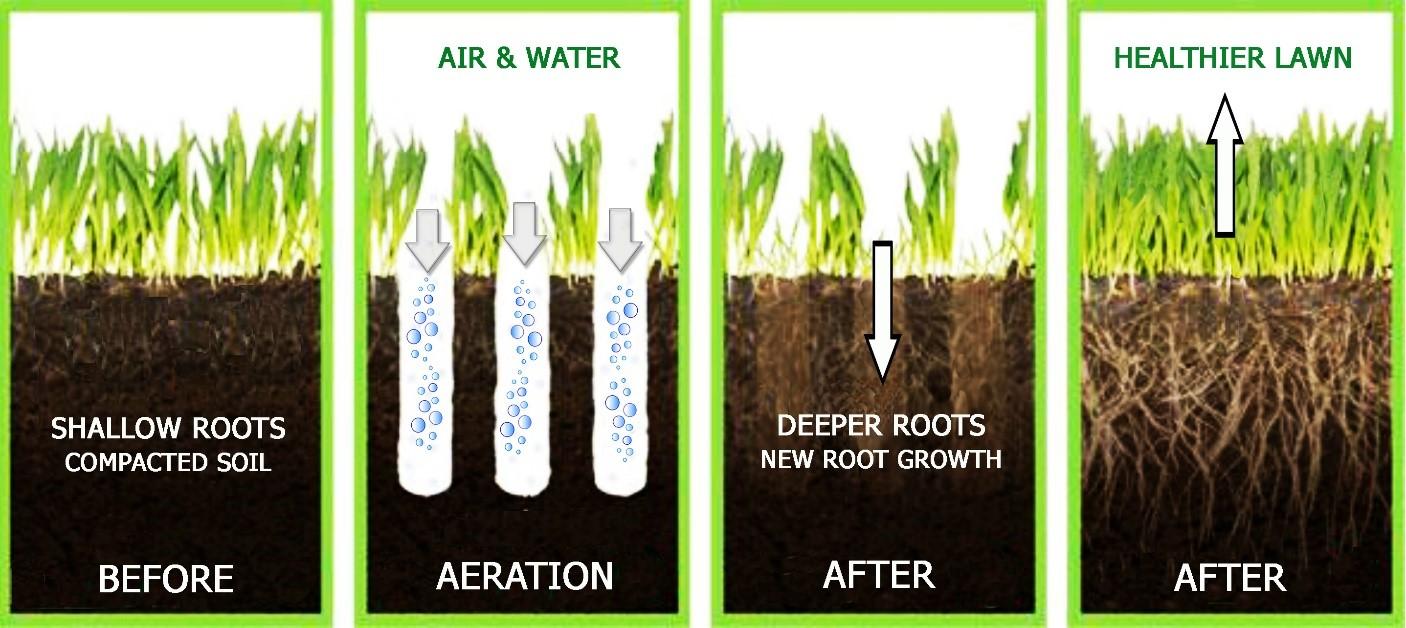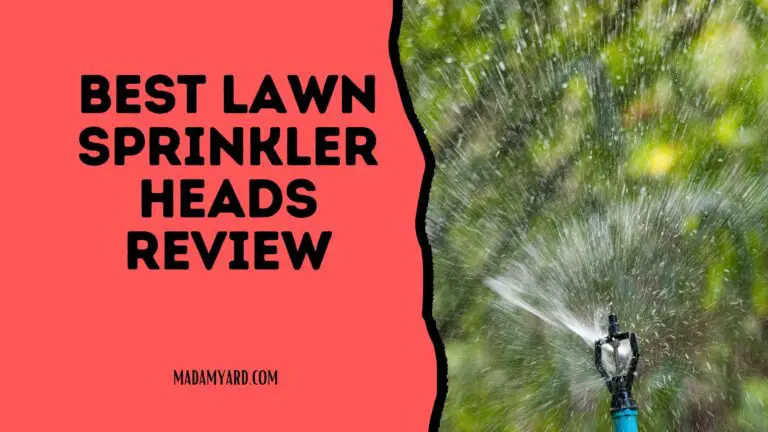Best Time To Aerate And Overseed Lawn
The fall is the best time to aerate an overseed lawn. Drop conditions are ideal for air circulation, over-seeding, and usually garden seeding due to warm soils, chilly evenings, and the passing on of annual weeds.
We all want a lush green lawn, but after a long summer or winter, your grass is likely to be drab, thin, or inconsistent. Aerating and overseeding or creating openings in the soil to sow new seedlings are two options for revitalizing your lawn.
Circulating air through and over-seeding may be beneficial to the health of your lawn if done correctly. Surprisingly, blunders may be all too easy to make and appear to take a toll.
What Is Lawn Aeration?
Dealing with thatch and compacted soil is a necessary part of providing much-needed lawn aeration for your grass.
Thatch is the loose, organic layer of dead and live material in the grass that develops between the green plant zone and the soil surface: shoots, stems, and roots.
Thatch grows up when turf produces organic waste faster than it can be broken down. Thatch isn’t always a terrible thing.
A thin layer of thatch works like insulation in lawns, protecting them from extreme temperatures and soil moisture changes. However, more than an inch of thatch might cause issues.
A thick layer of thatch may retain a lot of water, reducing the oxygen available to grassroots. It can increase pest issues by housing disease-causing organisms and insects.

The accumulation of grass thatch obstructs your lawn’s ability to breathe. Aeration of the grass can be as simple as poking holes in the soil (so-called “spiking”), although this is only helpful in small cases.
This random procedure will not serve individuals in desperate need of lawn aeration: core aeration is required.
Instead of simply skimming the autumn leaves off the top of the grass in the fall, rake the lawn completely to remove as much lawn thatch as possible.
Aeration of the lawn also helps to break up compacted soil, allowing water, air, and nutrients to reach the root zone. Lawn aeration is required more regularly in grassy areas subjected to continual foot traffic than in out-of-the-way regions.
Best Time To Aerate Lawn
When should you aerate your lawn? And what is the best time of year to aerate the lawn?
It’s better to aerate immediately before or during periods of rapid development. However, not right before or during times when the lawn is stressed. Heat or drought, for example. The optimal time of year to aerate depends on the grasses that make up your lawn.
When Should You Aerate Your Cool-Season Grasses?
When working with cool-season grasses like bluegrass, fescue, and ryegrass, it’s preferable to aerate during their growing seasons in the spring and fall.
When Should You Aerate Your Warm-Season Grasses?
Aerate warm-season grasses including Bermudagrass, buffalograss, St. Augustine, and zoysiagrass when the weather is warm, between late spring and early October.
Aerating In The Spring
In the spring, wait until the grass has been mowed a few times before aerating. It ensures that the grass recovers soon enough to reap the benefits of aeration’s increased pore space and air exchange at the root zone.
Aeration should be done at least once per year on most lawns. Aeration should be done twice a year on lawns with compacted soil or soil with a high clay percentage.
How Often Should I Aerate My Lawn?
Depending on the soil and usage of your lawn, you may need to aerate it once or twice a year. It may be necessary to aerate it twice or three times a year if utilized as a playground, a golf fairway, or other uses.
It is preferable to aerate your lawn before applying herbicide, as aerating after herbicide application might weaken the chemical barrier produced by the herbicide, allowing weeds to germinate.
After aeration, nutrients are used to assist the lawn combat weeds.
Your lawn will appear more robust and healthy after aeration.
Aeration is made simple and successful with the right tools. Most house lawns have thatch, which may prevent fertilizers, water, and herbicides from accessing the ground if left unmanaged.
Tools For Lawn Aeration
The manual aerator works by piercing the soil and upper level of the grass with tapered cylinders that produce holes/perforations in the turf and retrieve small plugs of dirt.
Spike Aerator
Spikes are utilized instead of cylinders that remove a plug of dirt when removed in this approach, which is comparable to the manual core aerator.
To loosen the soil, the spikes make tiny holes in the lawn. The pores created by these spikes enable extra oxygen, water, and nutrient penetration and dispersion.
Manual procedures offer both advantages and disadvantages. The main advantage costs; the equipment required is inexpensive, and many lawns are small enough that employing a machine is unnecessary.
The main downside is that manual aeration takes a long time and requires a lot of effort. However, we will look at several strategies that might help you save time and effort.
Using A Manual Core Aerator
This tool is built with a handle and a foot bar, making it simple to use. Hold it in both hands and force it into the earth, using the foot bar if necessary. For compacted and difficult-to-penetrate regions, the foot bar comes in handy.
Forking
The technique is similar to spike aeration. It is a very simple and time-consuming approach that nonetheless works. The best advantage is that it just takes a pitchfork or equivalent equipment; the thinner the tips, the better since you don’t want to leave massive divots in the turf.
What Is Overseeding?
Overseeding, often known as reseeding, is the process of reseeding an existing grass with fresh seeds. It’s easy to get these phrases mixed up and make sure one implies over-seeding your lawn and the other means starting over, but they’re both the same thing, and both are beneficial.
To keep things simple and avoid misunderstandings, we’ll refer to over-seeding from now on.
Every lawn requires over-seeding. The most obvious evidence that reseeding requires is a thin or barren spot in the grass, but even lush lawns require it.
That’s because older grass will ultimately deteriorate, and the optimum time to add to it is while it’s in good shape. Why?
Healthy grass is the most efficient strategy to keep weeds and insect pests at bay and provide cover for younger grass during vulnerable times of the year.
It’s critical to use the right kind of grass for the climate when over-seeding. Warm-weather and cool-weather grasses are the two most common varieties.
Don’t guess if you don’t know what kind of grass your yard has or what to put in it. Bring a sample to a local garden shop or hire a lawn-care specialist. That way, you’ll obtain the answers and assistance you require.
Best Time To Over-seed Lawn
Early fall is the best time to reseed and oversee the grass since the new plants can withstand cold better than the July drought.
It is also possible to be over-seeded in the spring and have a great lawn, but the possibilities of the young germination being affected by a lack of water are higher.
Your grass, which should be green, is at risk of turning yellow and drying out like hay. Overseeding is best done in the spring and fall.
It’s critical to keep the soil moist during spring over-seeding, which occurs in late April and early May because the chance of young germination being affected by a lack of water is higher.
Because the new shoots can resist cold temperatures better than the drought of July, the water supply is frequently better and more lucrative in the early fall.
Overseeding is something you can hire a professional to perform, but it’s also something you can do yourself. It entails spreading a thin coating of the seed throughout your area in equal proportions.
Its effectiveness is substantially boosted if it is preceded by soil aeration by coring because seeds penetrate more easily into decompacted soil by replacing the oldest blades of grass with fresh shoots. Overseeding aids in the regeneration of the lawn.
Trampled areas, embankments, undergrowth, and other shady areas that are adverse to grass formation are also reduced by this treatment.
If you opt to seed your lawn manually, use the chance to repair damaged areas by filling in the barren regions with dirt and other seed.
Top Tips For Maximizing Lawn Over-seeding
It takes 7 to 21 days for the grass seed to germinate.
- To encourage germination, keep your grass wet throughout this period. It is simple to perform if you have an irrigation system. Otherwise, you’ll have to use a sprinkler or manually water smaller areas.
- Don’t stop watering once you notice seed sprouting. During their first eight weeks of life, these tiny seedlings must have been cared about. They can easily dry up and perish if they don’t have a robust root system.
- It is not essential to use a starting fertilizer while overseeding. There are enough nutrients in the soil to begin the new seed sprouting if you fertilize your grass regularly.
After overseeding, fertilizing your lawn may cause existing grass to compete with new seedlings, making it harder for them to establish.
You can restore your lawn’s original health and beauty with the aid of a few basic types of equipment, a local rental store, and a free weekend.
Other lawn maintenance operations can also be completed in the fall. Aerating and fertilizing are excellent partners to over-seeding if done a week or two before over-seeding.
Fall is also an excellent season to manage broadleaf weeds, but be cautious when over-seeding and killing weeds simultaneously. If you treat weeds right before or after sowing, herbicides may kill new grass seedlings.
A step-by-step approach to fall lawn care will walk you through the process, allowing your grass to withstand whatever Mother Nature or your children throw at it.
Why Are Aeration And Overseeding Important?
The goal of lawn aeration and over-seeding is to make your real grass stronger. Filling up vacant or dry places with fresh grass does more than only make your lawn seem nice; it also improves its insect resistance.
Weeds have a harder time taking hold in a thick, lush, and uniform bed of grass, which makes lawn maintenance easier.
Aeration loosens compacted soil, allowing water and other vital grass nutrients to reach roots more freely. It has a significant impact on the health and development of grass. Even if your lawn is lush and green all year, aerating it during the growing season is necessary to keep it that way.
Conclusion
For novice lawn owners, caring for their grass all year might be a challenge. It is especially true during the winter, when grass maintenance may be a difficult task.
Fortunately, there are several things you can do to keep your lawn in good form over the winter months as well. These lawn care procedures are especially beneficial for maintaining the health of your grass over the winter.
Because aeration improves oxygen, water, and nutrient movement to the lawn roots, where they are most required, your lawn will perform better.
After aeration, over-seeding is an excellent method because the seed-to-soil contact is enhanced when soil plugs are retrieved and put on the surface.







